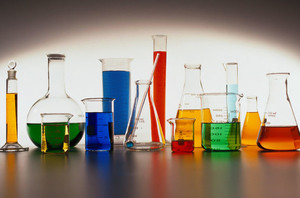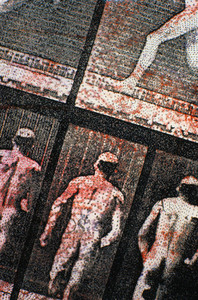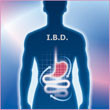Monoclonal antibodies (mAbs) are high molecular weight proteins (~150 kDa), with highly complex secondary and tertiary structures, subject to post-translational modifications, such as glycosylation.
However, despite the challenge, the high prices commanded by novel mAbs and the imminent expiration of patents for some currently marketed mAbs, make them an attractive target for development of biosimilars.
The problem for EMA, however, was whether regulatory approval of a biosimilar of such a complex molecule would even be possible, given that the biosimilar pathway had, until that time, been applied to far less complex therapeutic proteins, such as human growth hormone and erythropoietin [1].
In July 2009, following publication of an initial discussion on the pros and cons of biosimilar mAbs, EMA conducted a workshop, which included representatives from originator companies, biosimilars companies, academia and scientific journals, to discuss basic ideas on how to develop a biosimilar mAb.
As a result of this meeting, the CHMP’s (Committee for Medicinal Products for Human Use) Biosimilar Medicinal Products Working Party (BMWP) started working on a concept paper on mAbs. The publication of the concept paper in October 2009 triggered companies to request Scientific Advice procedures with EMA in which applicants requested answers on specific questions such as clinical trial design or selection of analytical technologies for comparing biosimilar mAbs to the reference mAb.
Concept paper on the development of a guideline on similar biological medicinal products containing monoclonal antibodies
www.ema.europa.eu/docs/en_GB/document_library/Scientific_guideline/2009/11/WC500014438.pdf
This was then followed by the publication of the draft guideline in November 2010.
Guideline on similar biological medicinal products containing monoclonal antibodies
www.ema.europa.eu/docs/en_GB/document_library/Scientific_guideline/2010/11/WC500099361.pdf
In 2011, a second EMA workshop on biosimilar mAbs was held to assist in the revision of the draft guideline. This once again increased the number of Scientific Advice requests EMA received from companies for biosimilar mAbs and IgG fusion proteins (which EMA considers to be related molecules for which the principles for biosimilar mAbs apply).
The final draft guideline was published on EMA’s website on 26 November 2010 for a six-month public consultation period (until 31 May 2011) [2]. Over 20 stakeholders contributed more than 400 pages of written comments, mainly related to challenges around biosimilars in general—not only specific to biosimilar mAbs. However, one frequently raised concern was whether it should be permitted to extrapolate efficacy data from one clinical condition, specifically studied, to another, not specifically studied condition, e.g. can biosimilar versions of antibodies to tumour necrosis factor alpha in rheumatoid arthritis (if suitable as a model) be extrapolated to their use in psoriasis or Crohn’s disease. The final guideline, which allows for extrapolation based on solid scientific evidence compiled by the applicant, was adopted by CHMP in May 2012 and came into effect in December 2012.
Guideline on similar biological medicinal products containing monoclonal antibodies – non-clinical and clinical issues
www.ema.europa.eu/docs/en_GB/document_library/Scientific_guideline/2010/11/WC500099361.pdf
CHMP also published a guideline on the immunogenicity assessment of mAbs, given the risk associated with these molecules for immunogenic reactions.
Guideline on immunogenicity assessment of monoclonal antibodies intended for in vivo clinical use
www.ema.europa.eu/docs/en_GB/document_library/Scientific_guideline/2010/11/WC500099362.pdf
The current concepts for biosimilar mAbs have evolved over time and are based on previous guidelines on specific product classes of biosimilars [3]. These guidelines introduced important milestones on non-clinical and clinical aspects that paved the way for more complex biosimilars including mAbs. Similarity to a reference mAb in terms of safety and efficacy profile is established to the best extent possible through a multidisciplinary comparability exercise.
Related articles
Biosimilar monoclonal antibodies on the horizon in Europe
Licensing of biosimilars in Europe
Development of biosimilars mAbs
Challenges in the development of biosimilars mAbs
References
1. Schneider CK, Vleminckx C, Gravanis I, et al. Setting the stage for biosimilar monoclonal antibodies. Nat Biotechnol. 2012;30(12):1179-85.
2. GaBI Online - Generics and Biosimilars Initiative. EMA adopts guideline on biosimilar monoclonal antibodies [www.gabionline.net]. Mol, Belgium: Pro Pharma Communications International; [cited 2012 Dec 14]. Available from: www.gabionline.net/Guidelines/EMA-adopts-guideline-on-biosimilar-monoclonal-antibodies
3. GaBI Online - Generics and Biosimilars Initiative. EU guidelines for biosimilars [www.gabionline.net]. Mol, Belgium: Pro Pharma Communications International; [cited 2012 Dec 14]. Available from: www.gabionline.net/Guidelines/EU-guidelines-for-biosimilars
Permission granted to reproduce for personal and educational use only. All other reproduction, copy or reprinting of all or part of any ‘Content’ found on this website is strictly prohibited without the prior consent of the publisher. Contact the publisher to obtain permission before redistributing.








 0
0











Post your comment